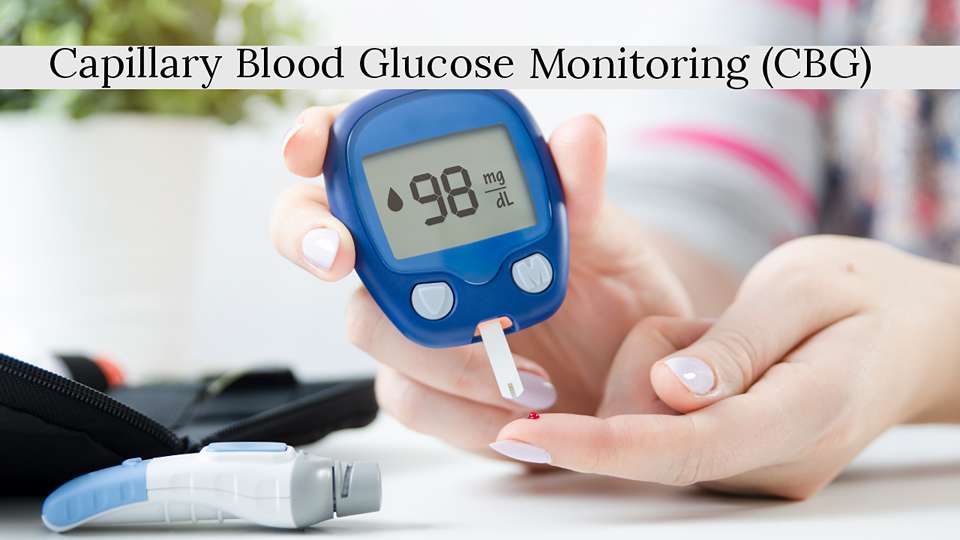
CBG Medical Abbreviation
Capillary Blood Glucose Monitoring: A Vital Tool for Diabetes Management
The medical abbreviation of CBG is Capillary Blood Glucose Monitoring. This medical abbreviation CBG is used for the evaluation & access of blood glucose levels. Apart from Capillary Blood Glucose Monitoring (CBG), there are other CBG Medical abbreviation meanings. The other CBG medical abbreviations are:
- Capillary Blood Glucose Monitoring (CBG)
- Capillary Blood Gas (CBG)
- Corticosteroid Binding Globulin (CBG)
- Coronary Bypass Graft (CBG)
Among the different meanings of the CBG abbreviation, Capillary Blood Glucose Monitoring (CBG) is the most common one & mostly used. CBG is the common medical abbreviation for Capillary Blood Glucose Monitoring used in medical terms.
Introduction of Capillary blood glucose monitoring (CBG)
Capillary blood glucose monitoring (CBG) plays a crucial role in the management of diabetes, enabling individuals to monitor their blood glucose levels conveniently and accurately. By providing real-time data on blood glucose levels, this Capillary blood glucose monitoring (CBG) method empowers individuals to make informed decisions regarding their diet, medication, and lifestyle choices.
Purposes of Capillary blood glucose monitoring (CBG)
- Monitor blood sugar levels to manage type 1 or type 2 Diabetes Mellitus.
- Reveal individual patterns of blood glucose changes, and helps in the planning of meals, activities, and what time to take medication.
- Prevents complications of hypoglycemia (seizures or coma) and hyperglycemia (diabetic ketoacidosis).
How to perform Capillary Blood Glucose Monitoring (CBG):
Here's a step-by-step guide on how to perform Capillary Blood Glucose Monitoring (CBG):
Equipment needed for performing Capillary Blood Glucose Monitoring (CBG):
1. Glucometer: A handheld device used to measure blood glucose levels.
2. Lancet device: A small, spring-loaded device used to prick the fingertip and obtain a blood sample.
3. Lancets: Sterile, disposable needles used in the lancet device.
4. Alcohol swabs: To clean the fingertip before pricking.
5. Disposable gloves
6. Cotton balls
The procedure of Capillary Blood Glucose Monitoring (CBG) are:
1. Wash your hands: Always start by washing your hands with soap and water. This step is essential to maintain proper hygiene during the procedure.
2. Prepare the glucometer: Turn on the glucometer and ensure it's working correctly. Make sure it has a fresh battery and the test strips are not expired.
3. Prepare the patient: Explain the procedure to the patient, and obtain informed consent. If possible, ask the patient to clean their hands with soap and water or an alcohol-based hand sanitizer.
4. Prepare the lancet device: Load a new, sterile lancet into the lancet device. Adjust the depth setting on the lancet device according to the patient's skin thickness. Generally, a higher setting is used for thicker skin
5. Clean the fingertip: Use an alcohol swab to clean the fingertip. before proceeding allow the fingertip to dry completely.
6. Keep the area to be punctured in the dependent position. Do not milk or massage finger site.
7. Apply sterile gloves.
8. Prick the fingertip: Hold the lancet device against the patient's fingertip (index, middle, and ring finger) and press the trigger button to activate it. The device will quickly prick the skin, causing a small drop of blood to form.
9. Collect the blood sample: Gently squeeze the fingertip to obtain a sufficient amount of blood to fill the test strip. Most glucometers have a strip port where you can touch the blood droplet, and the strip will draw in the blood automatically.
10. Read the result: The glucometer will display the blood glucose reading on the screen after a few seconds. Record the result in the patient's chart.
11. Dispose of the lancet and other materials: Safely dispose of the used lancet and other materials in an appropriate sharps container. Clean the glucometer following the manufacturer's instructions.
12. Educate the patient: Explain the results to the patient and discuss any necessary actions based on the reading, such as adjusting insulin dosage or dietary recommendations.
Remember, the process of Capillary Blood Glucose Monitoring (CBG) should be performed with care and accuracy. It's crucial to maintain patient comfort, use sterile equipment, and adhere to proper hygiene practices throughout the procedure. Always follow the guidelines and protocols provided by your educational institution and clinical supervisors.
Importance of Capillary Blood Glucose Monitoring (CBG)
Capillary blood glucose monitoring (CBG) is essential for individuals with diabetes as it allows them to monitor their blood glucose levels regularly. By measuring blood glucose levels at home, individuals can gain valuable insights into their condition and make necessary adjustments to their treatment plans. This monitoring method provides immediate feedback, enabling individuals to take prompt action to prevent hyperglycemia or hypoglycemia. Moreover, capillary blood glucose monitoring helps individuals understand the impact of their dietary choices, physical activity, and medication on their blood glucose levels.
Benefits of Capillary Blood Glucose Monitoring (CBG)
Capillary blood glucose monitoring (CBG) offers numerous benefits to individuals with diabetes. Firstly, it provides a convenient and non-invasive method for monitoring blood glucose levels, eliminating the need for frequent visits to healthcare facilities. This accessibility allows individuals to monitor their blood glucose levels at their convenience, promoting self-management and reducing healthcare costs. Secondly, capillary blood glucose monitoring facilitates early detection of fluctuations in blood glucose levels, enabling individuals to take immediate action to prevent complications. By identifying patterns and trends in their blood glucose levels, individuals can adjust their treatment plan accordingly, leading to better glycemic control.
Challenges and Limitations of Capillary Blood Glucose Monitoring (CBG)
Despite its numerous benefits, capillary blood glucose monitoring does have some limitations. One challenge is the potential for inaccuracies due to user error or equipment malfunction. It is crucial for individuals to receive proper training on how to use the monitoring device correctly. Additionally, the cost of monitoring devices and test strips can be a barrier for some individuals, limiting their access to this essential tool. Furthermore, capillary blood glucose monitoring may cause discomfort or pain for some individuals, leading to reluctance or avoidance of regular monitoring.

Comments (0)